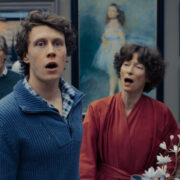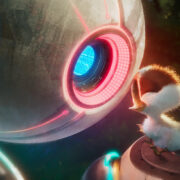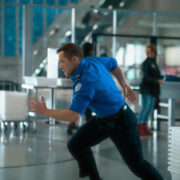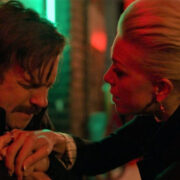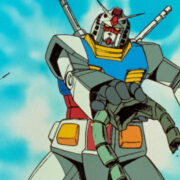Film Inquiry Recommends: Non-Leone Spaghetti Westerns

Alex is a 28 year-old West Australian who has a…
Over at our official Facebook page, we are currently posting daily film recommendations, with each week being a different theme. This is a collection of those recommendations! This week’s theme is Spaghetti Westerns that weren’t directed by the legendary Sergio Leone.
In the wake of Sergio Leone’s critical and commercial world-wide success following the Man With No Name Trilogy, the Spaghetti Western genre was born. Using the template of the classic American Western, the Spaghetti Western built upon those foundations, adding morally complex characters, heightened violence and the use of distinctive soundtracks. The boom in the 1960’s generated hundreds of films, many of them just derivatives of the ones that found success. Here’s just some of the great Spaghetti Westerns to come from that time.
1. Django (1966, Sergio Corbucci)
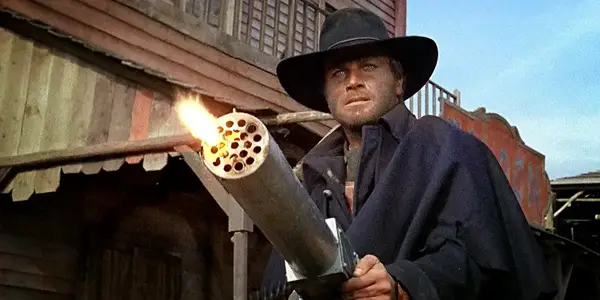
Corbucci’s classic Spaghetti Western is quite influential for a variety of reasons. Firstly, it introduced Franco Nero as a cool leading man, taking cues from Eastwood’s performance in Sergio Leone’s work, but managing to establish his own character. Django’s weapons are memorable as well, such as his trademark coffin which he drags behind him. The coffin holds his signature weapon: a large machine gun turret. A reference to this film can be seen in Robert Rodriguez’ Desperado, which had guns within a similar looking guitar case.
Corbucci’s film also added to the foundations of the standard spaghetti western that Leone had established, by introducing gory violence and scenes of torture, which added a darker element to the genre. Ears are bitten off, fingers broken, innocents massacred by machine guns, Django was much more violent than previous Spaghetti Westerns and added a lot more blood.
Django’s success lead to a string of unofficial sequels which tacked on the Django name, a recurring event in the 60’s/70’s, a famous film which would spawn a franchise of unofficial sequels which only share a similarity of genre and name, without anything plot-related to the original. Django is a pretty simple story, another Western interpretation of Kurosawa’s Yojimbo, with a stranger (this time, Django) rolling into town that is at war with itself due to feuding gangster clans, with Django taking advantage of the situation and wiping both parties out.
Django’s popularity was brought back recently with Tarantino’s film Django Unchained, which borrowed the character name and main theme song from this film (a very catchy tune at that). Franco Nero appeared as a cameo in the film, acknowledging the difficulty of pronouncing the Django name.
2. The Great Silence (1968, Sergio Corbucci)
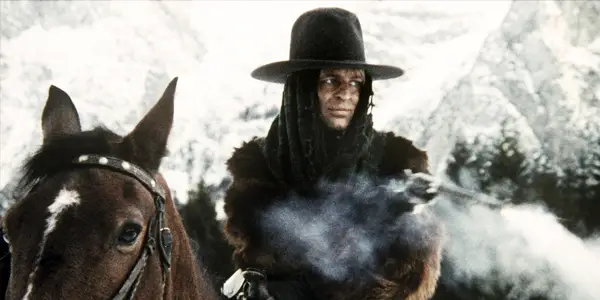
The Great Silence will be a film which’ll start to be talked about later on this year, as it served as the main influence for Tarantino’s newest film, The Hateful Eight. The latest trailer for Hateful Eight already holds images similar to those in Great Silence, trading in the sparse, empty desert landscapes usually seen in Westerns for crisp, white backdrops of winter-encrusted snow mountains.
Great Silence continued Corbucci’s ability to shake up the Spaghetti Western genre, first by changing the landscape and second by how nihilistic and bleak its approach was, doubling down on the the darker themes he introduced in Django. The protagonist is a riff on Sergio Leone’s The Man With No Name character, with the main character, Silence, not talking at all in the film. The film justifies it by having the character have his throat slit as a child, but the real reason was that the actor, Jean Louis Trintignant, refused to learn any lines so Corbucci had to make up a way to justify that.
It’s an interesting character, the truly silent protagonist, who must navigate his world through visual signs. The plot of Great Silence details outlaws who are hiding out in a small snowbound town who are hunted down and killed by Loco (Klaus Kinski, one of his best roles) and his gang. With the village people fearing for their lives, they call upon newly-arrived stranger, Silence, to settle the score. Silence’s fighting style includes never drawing a gun on someone first, always waiting for the other person to draw first so he can fire in self-defence. It’s a character decision that changes how the gunfights in the film go down and between that and his mute delivery, Silence is one of the more unique protagonists in Spaghetti Western history.
3. Death Rides A Horse (1967, Giulio Petroni)
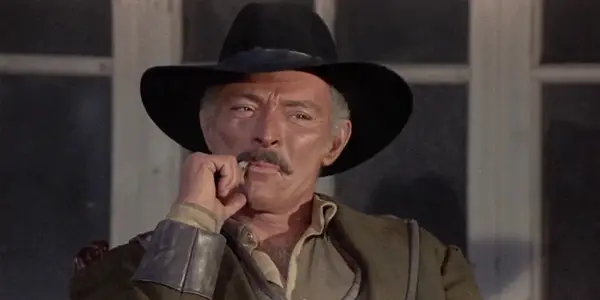
After the success of the Leone Man With No Name trilogy, Lee Van Cleef went onto become a star of many other Spaghetti Westerns, most of them became classics of the genre. Between this, The Big Gundown, Day of Anger and Sabata, Van Cleef managed to star in some great films. Death Rides A Horse is about Bill (John Phillip Law) who, as a child, witnesses his family killed by four robbers. Identifying a different trait about each of them (scars, tattoos etc.), Bill grows up and plans to enact revenge on them. Ryan (Van Cleef), a lonely outlaw, teams up with Bill to track them down to collect the bounty on their heads.
One interesting cinematic technique in the film is when Bill meets each of the members, loud blaring music goes off and the camera zooms in on each of the robber’s identifying trait. It’s a technique which has been borrowed by many films, most famously by Tarantino in the Kill Bill films, as the same technique is used when Trixie meets each of her enemies. A very entertaining Spaghetti Western which brings some original style and doesn’t waste much time.
4. China 9, Liberty 37 (1978, Monte Hellman)
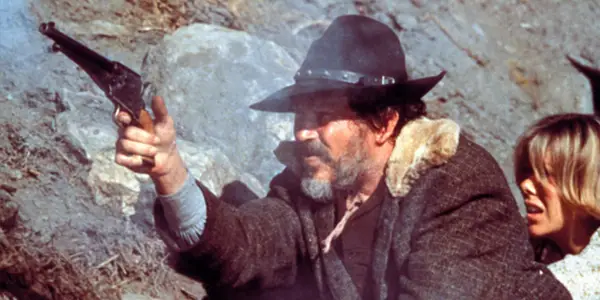
Directed by counter-culture veteran Monte Hellman, helmer of various acid westerns like The Shooting and Ride in the Whirlwind, this American-made Spaghetti Western is a great film which is sadly under-seen due to its complete unavailability on any media platforms (all DVD releases are public domain copies which are terrible quality). China 9, Liberty 37 is about convicted gunman Clayton (Italian star Fabio Testi) who is given a chance at saving himself by killing Matthew (the always great Warren Oates), owner of a ranch which is wanted by a railway company. Visiting Matthew, Clayton cannot bring himself to kill him. On his journey home, he is joined by Matthew’s wife (Jenny Agutter) who thinks she has killed Matthew. Matthew, still very much alive and now angry, teams up with the railway company to take down Clayton and his wife.
The action scenes are well-directed, but some of the special effects have not aged well, a problem that many films of the 70’s and 80’s suffer from. The plot does sound predictable, but is delivered well and has a nice twist at the end which adds some originality to the concept. Sam Peckinpah makes a very rare acting appearance in this film as a novelist. Whilst he’s not the best actor, it’s always great to see the legendary director trying something different.
Hopefully one day this film will receive an official release on Bluray or DVD so wider audiences can watch it, as the film’s small reputation is being suffered from the current available print of the film being of poor quality. The film has screened on the American channel TCM several times in a proper print, so it does exist.
5. Sabata (1969, Gianfranco Parolini)

Another tremendous Western featuring Lee Van Cleef (the second out of three on this list), which is Gianfranco Parolini’s (using the pseudonym Frank Kramer) Sabata, a stylish film which borrows heavily from Django but manages to make its own movie, unlike many of Django’s imitators.
Sabata is about the titular character (Van Cleef) a mysterious stranger who arrives in town, as it always happens in Westerns, where a bank robbery has just gone down. He quickly recovers the money and kills the initial robbers. Whilst being celebrated by the townsfolk, he goes to war with the group behind the bank robbery, whilst trying to keep the gang’s money for himself.
One thing that sets this apart from similar films is Sabata does talk more than the typical mysterious stranger protagonist and is willing team up with a bunch of misfits, including a drunken Mexican brawler and a silent gymnast, to take down the circus band who is behind the bank robbery. Sabata’s techniques of defeating his enemies includes various gadgets and trickery, which sets him apart from the typical run and gun action of other films. A well shot, entertaining Western which spawned a trilogy of films, the second; Adios Sabata, had the character played by Yul Brenner. The third film, Return of Sabata, had Van Cleef return in the main role.
6. Keoma (1976, Enzo G. Castellari)
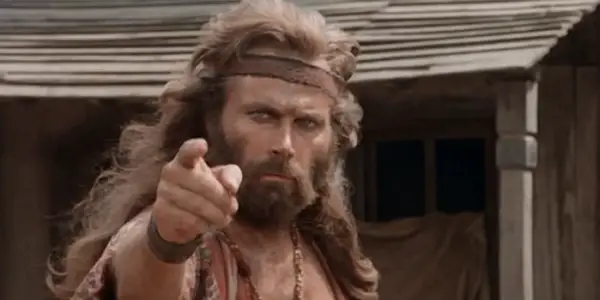
Keoma is a late entry into the Spaghetti Western genre, when the genre was slowly dying out and the Eurocrime craze was rising in popularity thanks to Dirty Harry. Keoma brings Spaghetti Western favourite Franco Nero, as half-breed indian Keoma, who returns home after his service in the Civil War to find his town run by ex-confedarate Caldwell (Donald O’Brien). His violent group of thugs, through the use of intimidation and violence holds the town in a tight grip. After learning that his three brothers are a part of Caldwell’s gang, Keoma teams up with his old farm friend to take the town back.
What puts this film above the other sagging Spaghetti Western films, which were released at the time, is its exceptional acting and cinematography. The film feature some great action choreography and feels like the cast and crew gave a damn, which is a lot more than most of the band-wagon jumping features being produced at the time. Keoma takes its protagonist and his story seriously, making Keoma’s journey and the relationship between his brothers work, making the audience actually care about his story. The only negative element of the film is the soundtrack, which doesn’t quite work with the associated images and general theme of the film.
7. Day of Anger (1967, Tonino Valerii)
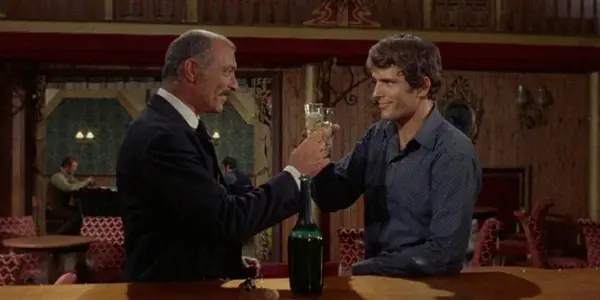
Day of Anger doesn’t reinvent the wheel, but uses the tropes of Spaghetti Western in a really excellent way. Day of Anger is about feeble Scott Mary (Giuliano Gemma), his lousy life revolves around cleaning up the town of Clifton and getting repeatedly picked on. When a mysterious gunfighter rolls into town (Van Cleef) , he becomes a father figure to Scott, teaching him how to be a talented gunfighter. With his new set of skills in hand, Scott decides to clean up his town and take down those who have screwed him over. When one of those people happens to be a friend of Frank’s, the two friends have a showdown.
The film takes a thin plot and really builds upon the characters and its story, creating interesting characters out of Frank and Scott who could’ve been left as typical stereotypes. The score by Riz Ortolani is engaging and very reminiscent of Ennio Morricone’s previous Western scores. The director Tonino Valerii did direct some more Spaghetti Westerns after this, the most memorable after this one being My Name is Nobody, which was famously co-directed by Sergio Leone (who was uncredited), a comedic Spaghetti Western starring Henry Fonda.
Can you recommend anymore great spaghetti Westerns that weren’t directed by Sergio Leone?
(top image – Django (1966) source: Rialto Pictures)
Does content like this matter to you?
Become a Member and support film journalism. Unlock access to all of Film Inquiry`s great articles. Join a community of like-minded readers who are passionate about cinema - get access to our private members Network, give back to independent filmmakers, and more.

